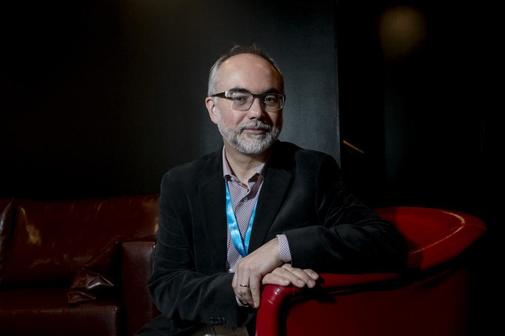The European Archive of Genomes and Phenomas, better known by its acronym in English EGA, was created a decade ago to house the genetic information of people participating in international clinical studies. Today it has more than 2,000 jobs that analyze everything from usual diseases such as cancer and diabetes to much more rare ones. The encrypted data is physically stored in the Mare Nostrum supercomputer of the National Supercomputing Center in Barcelona. When a scientist needs them, they are decrypted and served. ICREA Professor and researcher Arcadi Navarro co-directs this file, managed by the Center for Genomic Regulation (CRG), in Barcelona, and the European Bioinformatics Institute in Cambridge (United Kingdom). The project is promoted, among other entities, by the Carlos III Health Institute and «la Caixa».
The EGA is not an infinite archive like the Babel library , but the knowledge about diseases and treatments that can be generated is glimpsed today. Navarro has spoken about this potential in a day at the Caixaforum in Madrid.
They save more than 7.5 million gigabytes of data, what does that figure say about the value of the file? Of the three reference files in the world - the other two are in the United States and Japan - the European EGA is the which custody more studies. But we should not be impressed only by its volume, but because it is a treasure. The mission of the EGA is that once a specific group of researchers publishes a study, the data they use is available to the scientific community to make new studies, with which to look for unimaginable things at the present time. The great value of the file is its potential. That is why the most important figure for me is that thousands of scientific articles that have used EGA data are published every year. In 2018, there were 18,000 who cited the file, so there are discoveries that would not have been possible if it were not because someone assumed the responsibility of safekeeping and distributing the data. What examples would highlight its usefulness? It facilitates meta-analyzes, grouping several studies on a disease to reach new conclusions. It also adds scattered cases of rare diseases, which helps in its investigation. And it offers unexpected results: by linking data of diseases that appear in the first years of life with others of late development we show that they share genetic architecture. For example, having a low risk of glioma (a certain type of brain tumor) may pose a higher risk of heart attacks. The United Kingdom has announced that it will perform five million genomic tests in five years. American NIHs seek to collect genetic data from one million people. Is the genomic race the space of our time? [Laughs] Undoubtedly, but with a big difference: the community that runs the genomic race is very aware, and thus moves it to politicians, that it must be collaborative. The rockets will be safer and will go further, if we launch them together. For example, information from the UK Biobank, a bank with data from half a million people in the British national health system, is distributed from the archive. So if you participate as a volunteer in this program, you assume that your data will not be used only by your doctor, but will be put at the service of the talent of many other researchers. And the return you get can come from anywhere on the planet. What guarantees are there that such data will not come out of scientific circles? We have the latest data protection technologies. Even if someone irregularly accessed the data, they would not understand them without the keys to decrypt them. We look like a Swiss bank. In 2023 it is estimated that 80% of human genomics data will be produced in a clinical context. How do you move from the reality of everyday life to the technological vanguard? In the field of personalized medicine, there are aspects in which we are very advanced. Now it's about extending procedures that already exist, without inventing anything new. It will take more training and resources, but above all make it very easy for doctors. The national health system has a very high level of pressure and demand, especially after the crisis. When your mission is to care for a patient, to be useful, the rest seems like a trifle to you. Even if you understand that saving data will allow a better diagnosis in a year, every day you can. What role does it predict genomic analyzes in the health field? They will be a routine test, such as radiographs. And they already are in many diagnoses and treatments.According to the criteria of The Trust Project
Know more- Science and Health
Health Starting early antiretroviral therapy benefits newborns with HIV
Space19 + The Seville summit will break the record of investment in space
HealthHealth finances contraceptive vaginal ring for the first time

